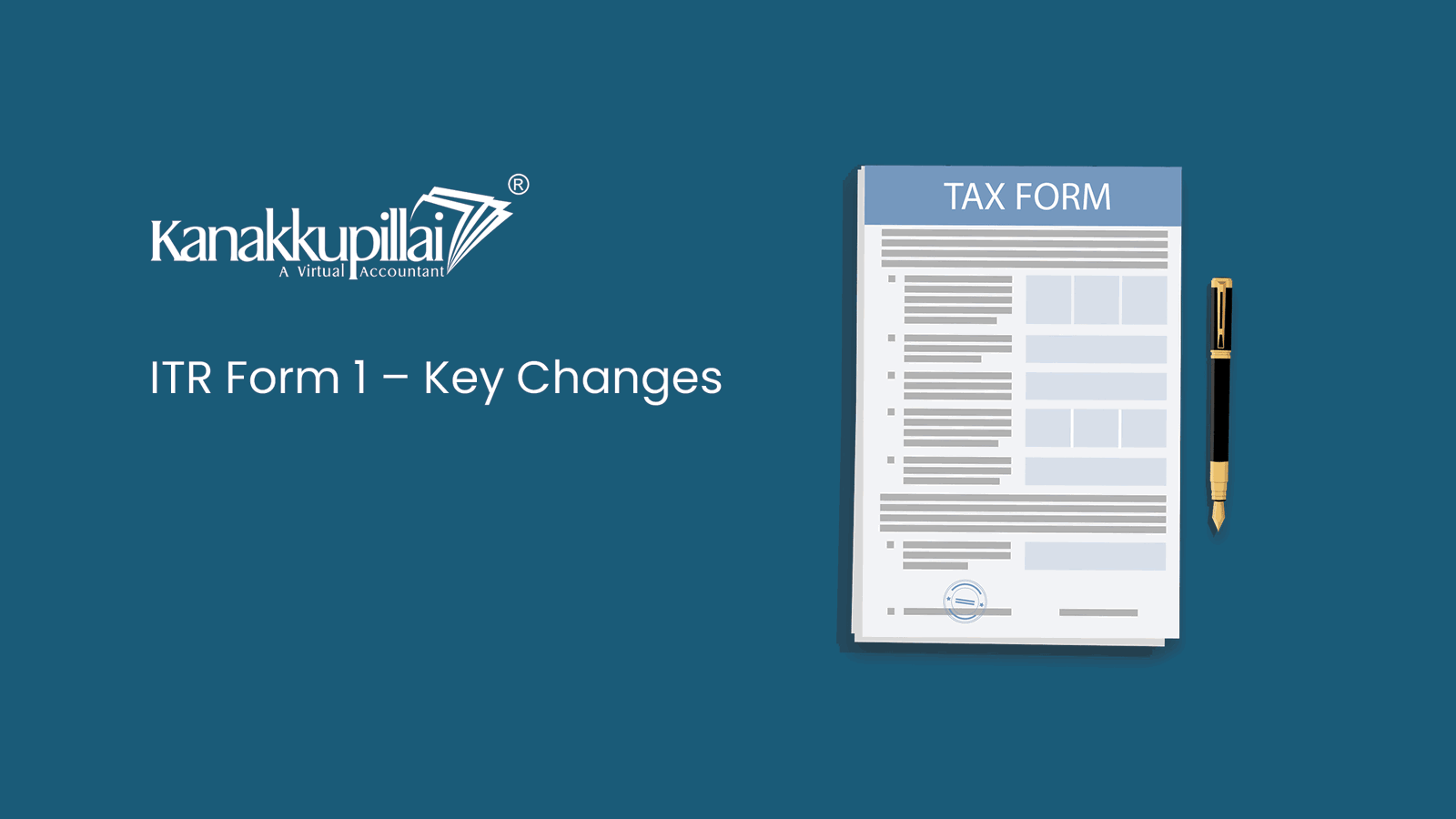The most common form for filing Income Tax Returns for salaried individuals in India is called ITR Form 1, also known as Sahaj. It simplifies the process for individuals with straightforward sources of income to comply with tax requirements. Applicable to income made in FY 2024–25, the Income Tax Department has introduced changes to ITR Form 1 for the Assessment Year 2025–26 to support transparency, discourage evasion, and follow new income reporting standards.
Who Can Apply for ITR Form 1?
Only Indians who earn a total of ₹50 lakh or less per year are allowed to use ITR Form 1. It is intended for individuals with a salary or pension and a single house property, as well as those earning money from bank interest or regular deposits. Taxpayers earning less than ₹5,000 in agricultural income are included in Form I-T.
Key Changes in ITR Form-1
-
Individuals Not Eligible for ITR Form 1
People who are directors in a company or hold unlisted equity shares are not allowed to fill out the ITR Form 1. It is not suitable for non-residents or individuals with income or assets overseas, or those who earn capital gains or business income. An individual earning income from both investment properties and cryptocurrency must file with ITR-2 or ITR-3.
-
Information on Indian Contact
According to the new rules, everyone must now provide their correct Indian address and mobile number. This helps you stay in contact with the Income Tax Department, mainly when you get notices, updates on refunds, or have questions.
-
Detailed Disclosure of Salary Components
On the latest ITR Form 1, you need to show your salary breakdown instead of seeing it as just a single figure. People paying taxes should write down their basic salary, House Rent Allowance (HRA), special allowance, and all other components one by one. When HRA or similar types are exempt, you must tell the tax department about it separately for proper assessment and checking.
-
Other Sources of Income
Every single amount listed under “other sources” should be stated clearly now. All interest you get from banks, through fixed and recurring deposits, along with taxable income, should be properly categorized. Being transparent prevents unnecessary checks and connects your results with the data you have already provided from your bank and PAN.
-
Standard Deduction and Section 80TTB
The option of ₹50,000 as a standard deduction is kept for salaried people as well as those who get monthly pensions. Now, an area is allocated in the form to enter this deduction. Furthermore, those who receive interest from banks and post offices in their senior years are permitted a deduction of up to ₹50,000 under Section 80TTB, and this sum should be reported separately.
-
Reporting the Income from House Property
People declared as homeowners generally need to disclose if they used their house as a self-occupied place or as a rental property during this year. All such details as rent received and tax payments to the city should be reported correctly as rental income. As a result, the department can monitor all rental income, since it is a common place for people to misreport their taxes.
File ITR with Expert Support from Kanakkupillai
While filing an ITR may be straightforward, leaving out details or making errors on Form ITR-1 may still result in official notices, delayed refunds, or additional fees. For this reason, Kanakkupillai, a respected provider in online commerce and taxes, offers salaried individuals budget-friendly services for filing their ITR. Their team members review your form to ensure that the correct deductions and tax credits are applied, by current rules.
Conclusion
The changes in ITR Form 1 indicate that the government aims for income reporting to be more transparent and more compliant. Everyone needs to be aware of these new updates, whether filing taxes for the first time or many years in a row, to avoid problems and delays. Kanakkupillai makes filing your taxes simple and free from errors, so make sure to give it a try this tax season.





